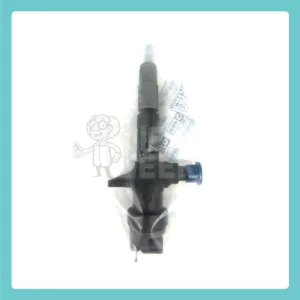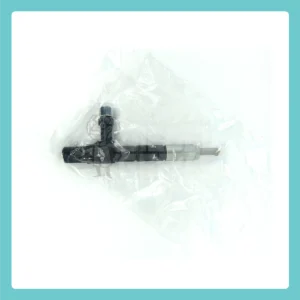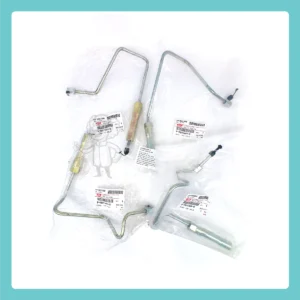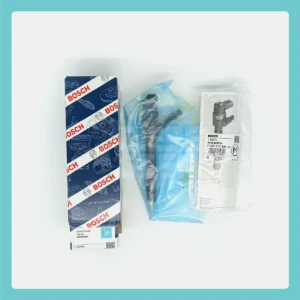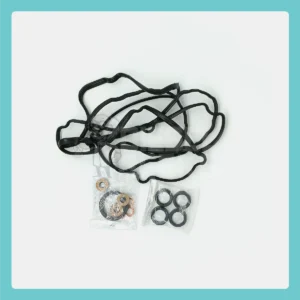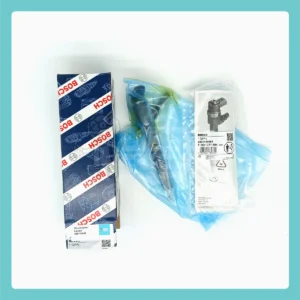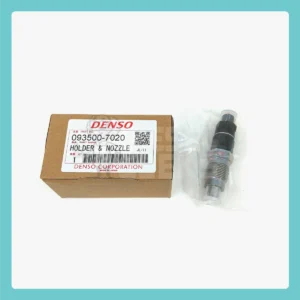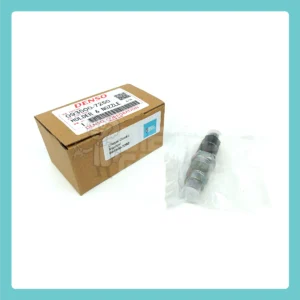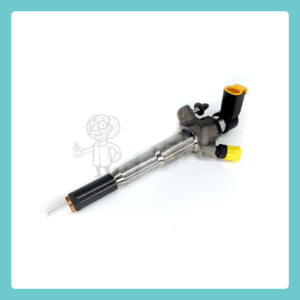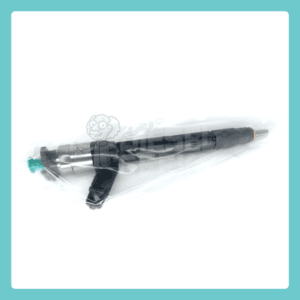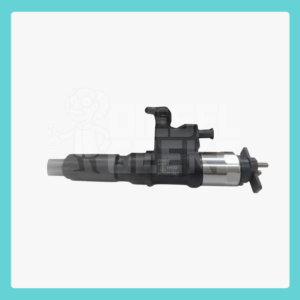Why does my Hilux blow white smoke on start up?
The injectors within a 1KD are ‘oil cooled’. This means they sit within the tappet cover exposed to the engine oil. If the injector seat/washer that goes around the injector is leaking, as the engine sits overnight, engine oil leaks past and into the cylinders. Therefore, when you start the engine, it blows the white smoke of the oil burning.
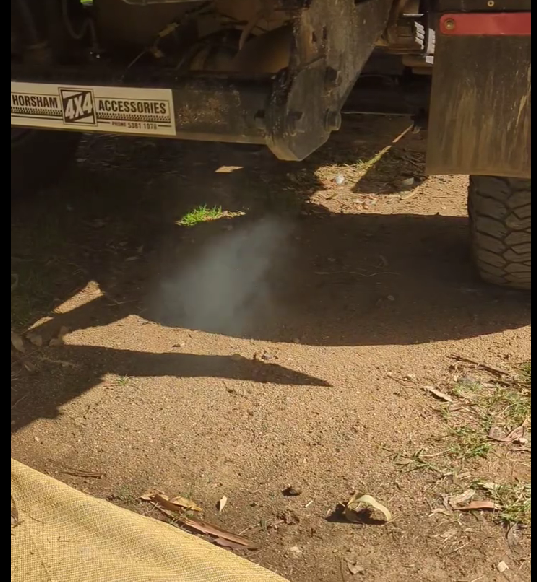
Should I worry about my Hilux blowing white smoke on start up?
YES! Whilst a little oil into the cylinder overnight is not a massive problem. Its the combustion gases going the other way when the engine is running that can lead to catastrophic failures.
The hot gases coming out essentially ‘burn off’ the oil. Combine this with the carbon/soot, the engine starts creating its own ‘sludge’. You can see this sludge below.

The real issue is that this sludge blocks the oil pick up, and will starve your engine of oil leading to massive (and VERY expensive) engine failure.
How do I stop my Hilux from blowing white smoke?
Essentially you must remove the injectors and replace the washers. This is a fairly major job that has some very careful attention in the following areas:
You must be VERY clean to avoid contaminating the common rail injection system:
Common Rail injection systems work to extremely fine tolerances, and as a result, are very prone to failures and issues from poor fuel quality and contaminates in the fuel. If you’re undertaking this job, you must ensure that you stop dust and debris from entering the fuel system or the removed injectors sitting on your bench.
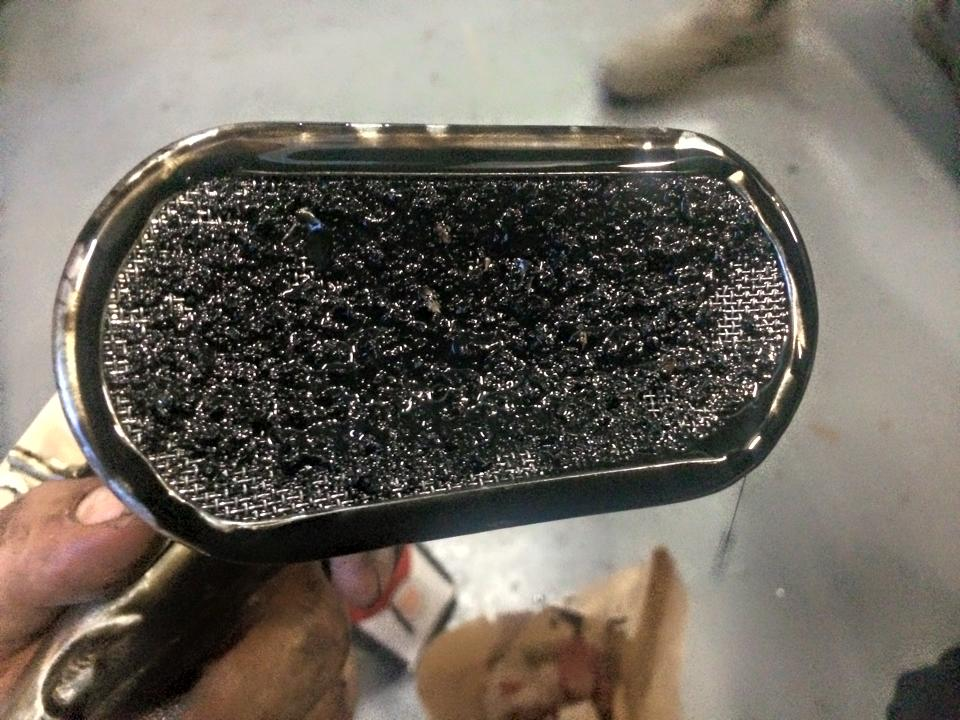
You will almost always need to clean up the section of the head that was leaking past the washer:
This is where it gets tricky. Sometimes you can clean it using general things lying about the garage, but sometimes, you might need to actually ‘cut in’ the seat a little to ensure it cleans up properly.
Failing to give the washer a clean seating area will 100% lead to early (if not immediate) failure of the seat you’ve just spent time and money to replace.
Has Toyota or anyone fixed the problem?
Ah - sort of. Yes in that there was a part update and they covered the washers with a zinc type coating that certainly appeared to help. AND they issued a service bulletin to replace the seals every 80,000kms.
Below was taken from Pradopoint - Injector oil seals - Toyota Prado How To's, Technical Information & Reviews (pradopoint.com.au)

Do I recommend you do this?
It gets bloody expensive. It takes a brave person to advise something different to Toyota and their 100’s of millions they spend on R&D every year.
I will tell you how I handled the situation on my own car and you can make up your own mind:
- I would park the car nose up and nose down regularly to look for white smoke.
- Every Oil Change, I inspected the oil pick up to see if there was any on there.
- First signs of any trouble, out they would come and replace them.
Should I change injectors at the same time?
Again, a personal question for you. If you’re paying a mechanic to do this job, then the costs start adding up. The injectors are circa $1900 but you’re paying like $500 in labor to remove and refit the injectors to change the seats.
Worst case you pay $500 now to do the seat job, and then again to do the injectors again soon… so it basically comes down to understanding how many kms the injectors have done and the condition they are in.
If they have 250,000kms plus - I would personally change.
If less, then I would have an injector Diagnostic check done to see how they are.
Make an informed choice that's right for you, based on your specific situation.
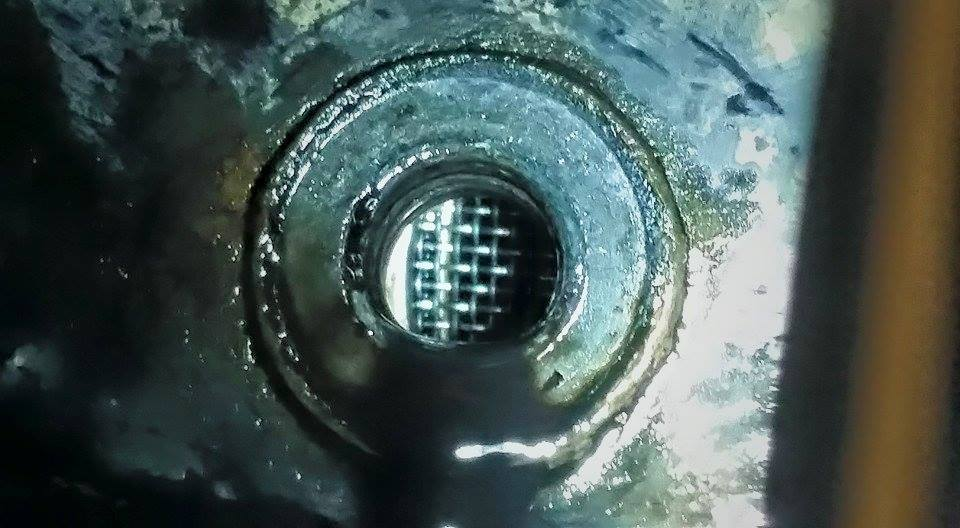
Should I try to replace these injector seats myself?
Another question for you! If you are very comfortable working on your own engines, operate very clean and disciplined (and don't mind the consequences if you stuff up! haha) then I’d say sure, try it. You will find the 1KD fitting kit you need at the bottom of the page.
If any of the above has you even a little bit worried, or you think the seat might have been leaking for some time, then please get it done at a local diesel specialist repairer. They will not only be very experienced but will also have the seat-cutting and cleaning tools you’re very likely to need!
To find a DieselGeeks affiliated repairer - click here.
TOYOTA Parts for YTour Baby!
- $748.00Add to cart
- $264.00Add to cart
- $346.50Add to cart
- $467.50Add to cart
- $223.85Add to cart
- $462.00Add to cart
- $880.00Add to cart
- $126.50Add to cart
- $100.00Add to cart
- $710.00Add to cart
- $577.50Add to cart
- $539.00Add to cart


